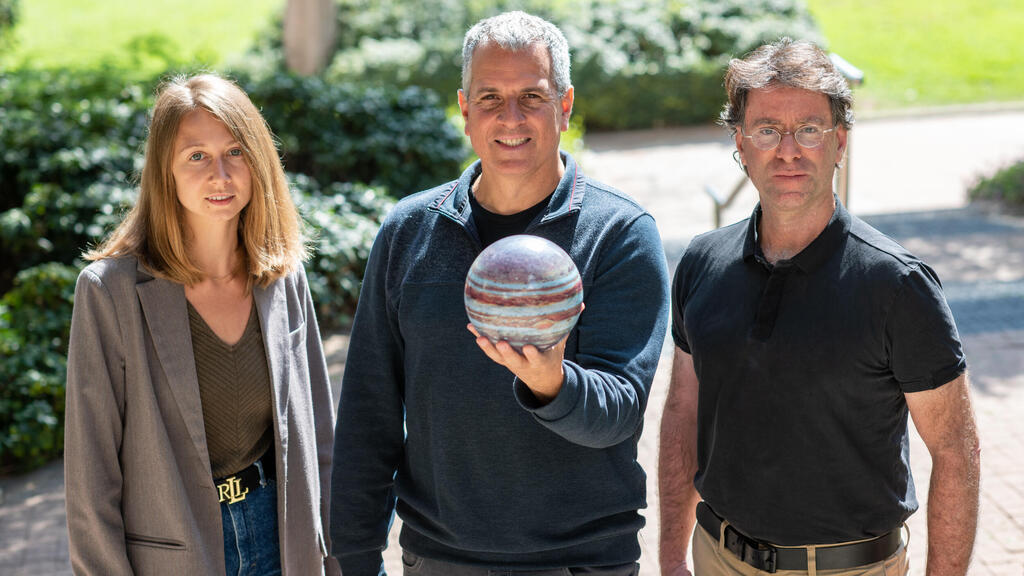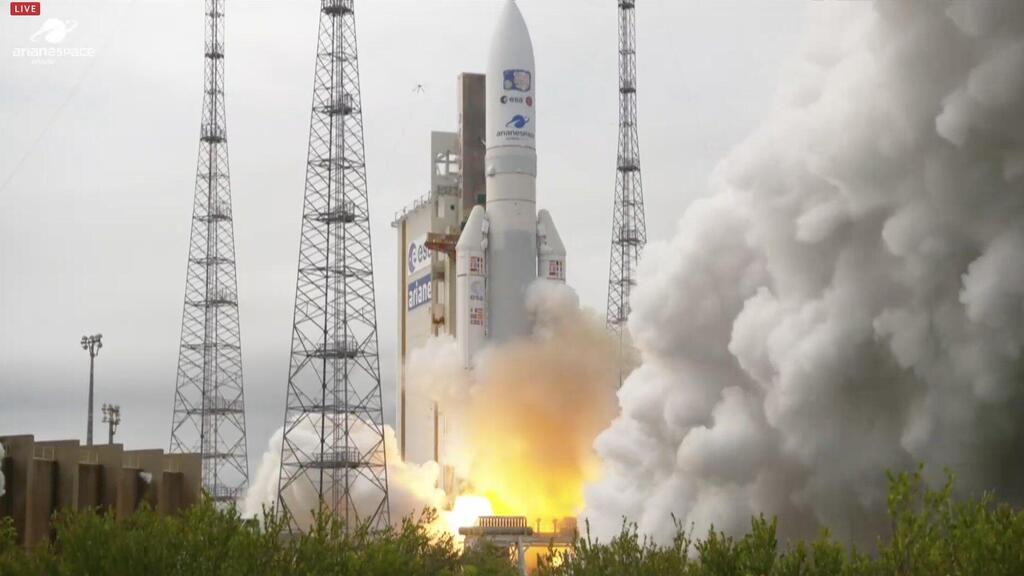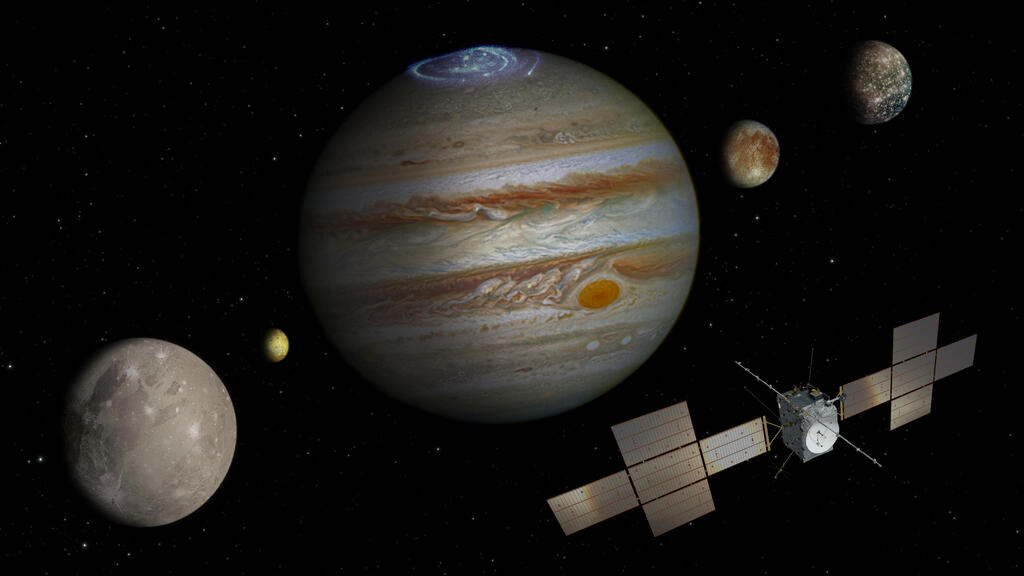Liftoff of JUICE spacecraft
(Video: European Space Agency)
After its launch was slightly delayed yesterday due to weather conditions, the European Space Agency (ESA) launched Thursday a historic mission to planet Jupiter equipped with an Israeli complete electronics system on board the JUICE spacecraft.
Stories that may interest you:
The new technologies and scientific research were funded by the Israel Space Agency and the Innovation, Science, and Technology Ministry, in cooperation with Jerusalem-based company AccuBeat. The ESA also reported that the first stages of the launch were completed without issues.
The technologies will include Israeli company AccuBeat’s USO clock, which will constitute a central component in groundbreaking experiments to be conducted by the Weizmann Institute of Science.
This mission, which is the most expensive one ever launched by the ESA aims to conduct scientific experiments on Jupiter and its moons, and after a seven-and-a-half-year journey to the planet, the spacecraft will conduct research to map Jupiter and its environs and detect whether the conditions for life exist on its moons.
The spacecraft will be launched atop an Ariane 5 launcher and embark on a 900 million kilometer journey to the planet Jupiter where it will orbit its moons Europa, Ganymede, and Callisto over four years, in what is the European Space Agency's biggest and most prestigious mission to date.
"We've participated in international space missions in the past," said Prof. Yohai Kaspi of the Weizmann Institute of Science, who's leading the Israeli team of JUICE and is currently staying at the launch site. "But the fact that Israel will have a large part to play in this mission makes this mission particularly significant."
Prof. Kaspi and his research partner, Dr. Eli Galanti, began working on the project in 2013, when the mission was announced by the European Space Agency. "When I first presented the idea to the Israel Space Agency about building a device in Israel and conducting our own original experiments in the mission, it didn’t feel real," he said.
3 View gallery


Maria Smirnova, Prof. Yohai Kaspi, and Dr. Eli Galanti
(Photo: Weizmann Institute of Science)
"But the close collaboration we created between industry and academia made it possible. Now, we have the most accurate device of its kind in the world."
The Weizmann Institute of Science explained that in order for JUICE to gain sufficient speed to travel toward Jupiter, the spacecraft is expected to orbit Venus once and our own planet three times.
Given the long duration of the space mission, the Israeli device called an Ultra Stable Oscillator which will be used to study the atmosphere of Jupiter and its moons, needs to be exceptionally durable.
"This is a great achievement," Dr. Galanti said. "The device is designed to be not only durable but also lightweight: it weighs only 2kg.”
During its stay around Jupiter, the JUICE spacecraft will orbit the gas giant almost 100 times. During each orbit, the onboard instrument will measure tiny changes in the frequency of radio waves sent from the spacecraft through Jupiter's atmosphere back to Earth.
Scientists at the Weizmann Institute of Science said this will result in a temperature profile of all points of the planet that can be used to construct a three-dimensional map of the giant planet's atmosphere.
"In order to carry out this experiment, the signal must be very accurate, which is why we needed our own specialized measuring instrument on the spacecraft," said Maria Smirnova, a research student in Prof. Kaspi's group. "To illustrate its accuracy, we can say that if it were transmitted continuously for 100,000 years, it would only deviate by one second during that time."
Scientists from the Weizmann Institute of Science will contribute their experience not only to the study of the atmosphere of Jupiter, but also to another mission - exploring the subsurface oceans of Jupiter’s moons: Callisto, Europa, and Ganymede.
The JUICE scientific team aims to survey these oceans after previous measurements revealed that beneath their outer ice layer, these are possibly the largest water reservoirs in our solar system.





